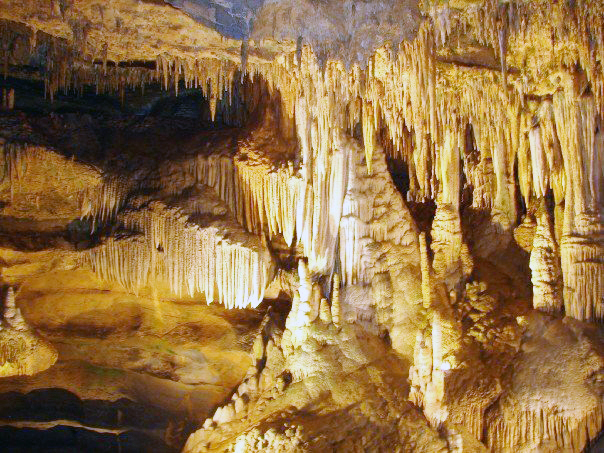Frederick County’s Lost Cavern
by James Rada, Jr.
In February 1880, the Baltimore Sun reported, “A large cave is reported to have been discovered near Woodsboro, Frederick County, rivaling in extent and splendor the famous Luray cave.”
The cave was known as “fox den.” It was on the George L. Smith farm, north of Woodsboro. Who and how it was discovered that the den was actually a cave is not known, but someone found a reason to enter the den at some point and saw it hid more than foxes. Word spread quickly of the underground marvel.
The Sun sent a reporter to explore the cave and write up a report. A group of local men agreed to show him the cave. “Having procured picks, shovels, old clothing, candles, matches &c., the party proceeded on their way to the cave, and, who knows, perhaps to glory,” according to the Emmitsburg Chronicle.
What the group found was not another Luray Caverns, but something that left them disappointed and disgusted, according to the Chronicle.
A writer with the Chronicle calling himself “Nemo” remained curious about the caverns. He traveled to Woodboro and hired one of the men who had led the Sun reporter to the cavern. The entrance was located near an area that had been quarried at the base of a limestone bluff. The guide used a gushing spring at the base of the bluff as a landmark to find the entrance.
Nemo wrote, “…I put on my ‘crawling suit,’ and with a box of matches in one pocket and candles in another, we were ready to creep.”
To enter the cavern, they had to slide into the den feet first. Nemo wrote “had I been at all aldermanic, I could not have got through.” Aldermanic was a slang term at the time for having a pot belly.
The entrance sloped downward, and they slid about eight feet before dropping into the first room of the caverns.
The first room was about 10 feet by 15 feet with a height of 3 feet. It had an “unbroken limestone arch overhead.”
From this room, they squeezed through a short passage at the north end of the room. It led into another room of the same height, but this room was 25 feet by 30 feet. It was also filled with stalactites and stalagmites.
“The end of one stalagmite knocked loose from the floor, measured five inches in diameter, and had twenty-five clearly defined circles of alternate layers of magnesia,” Nemo wrote. He took it as a sample.
This room had two passages other than the one they had come through. The passage on the north end was too small to crawl through, so they went through the western passage. This room had stalactites and stalagmites in it and a cold pool of water that measured 3 feet by 10 feet.
Going through a southern passage from the chamber, they wound up in a room that was seven feet by eight feet, “this was coverly by a lofty arched ceiling thickly studded with stalactites and supported by rocks forming walls of other apartments,” Nemo wrote.
The only passage from this room they could pass through was one that led back to the original chamber. Once there, they squirmed back up the slope and outside.
Besides mineral samples, Nemo caught a bat hanging from the ceiling, although he didn’t note which room this was in. He also saw bones of animals that had slid into the cavern and had been unable to escape because they were too small.
He believed the cavern could be enlarged, but noted, “It is not likely that this cave, even after a thorough exploration, would rival Louray, or that more recently discovered in Pennsy’vania, but ‘tis a ‘big thing’ for Woodsboro.”
A 1950 report titled The Caves of Maryland by William E. Davies lists the cave as the Centerville Cave. It is described as “A cave consisting of four small rooms is reported in an old quarry in the Wakefield marble, one-half mile east of Centerville, along the Coppermine road.”
However, the report notes that by this time, the cave seemed to have been lost and could not be located during the field work. Perhaps, it collapsed or maybe the entrance is so small it has become hidden.

Luray Caverns Courtesy of Wikimedia Commons

